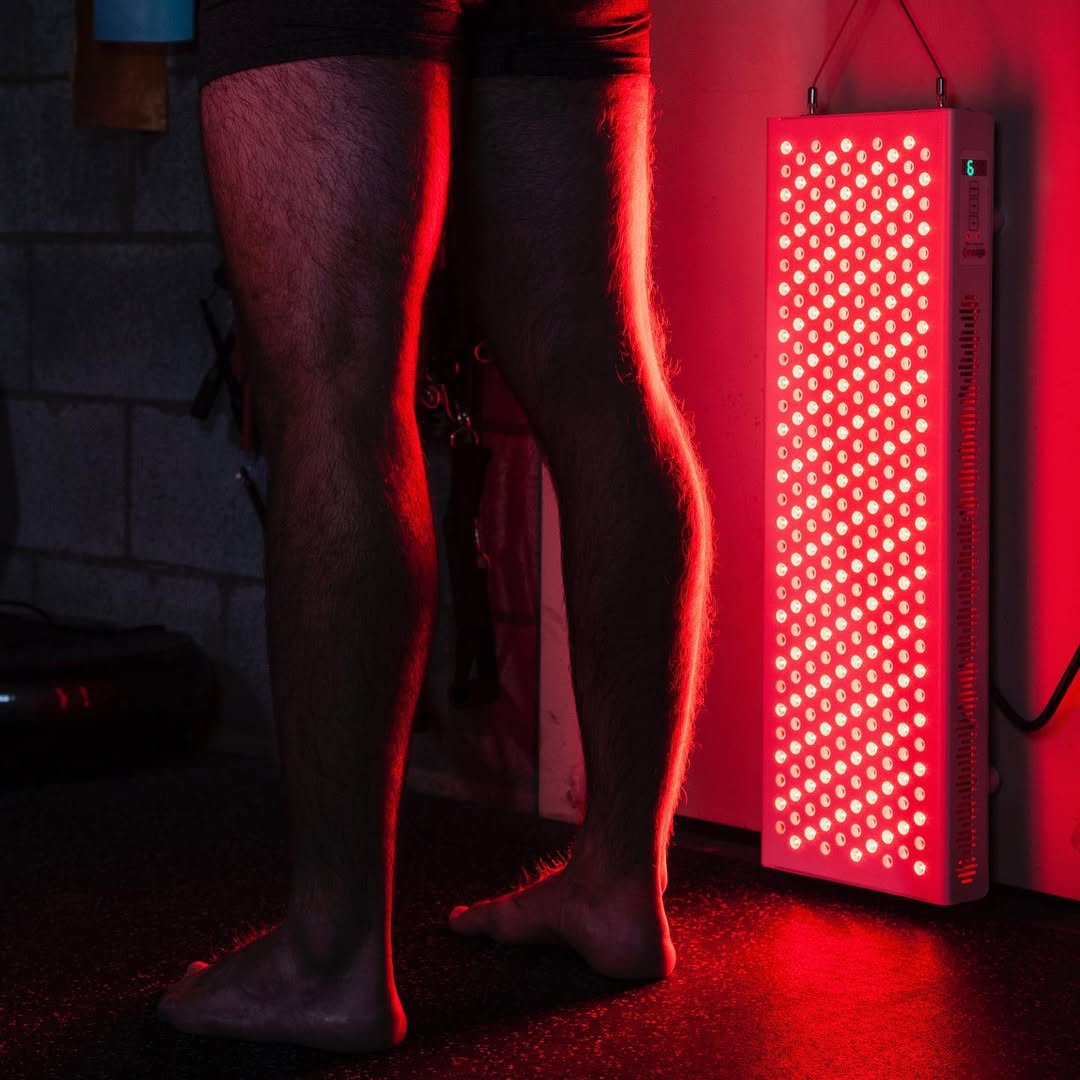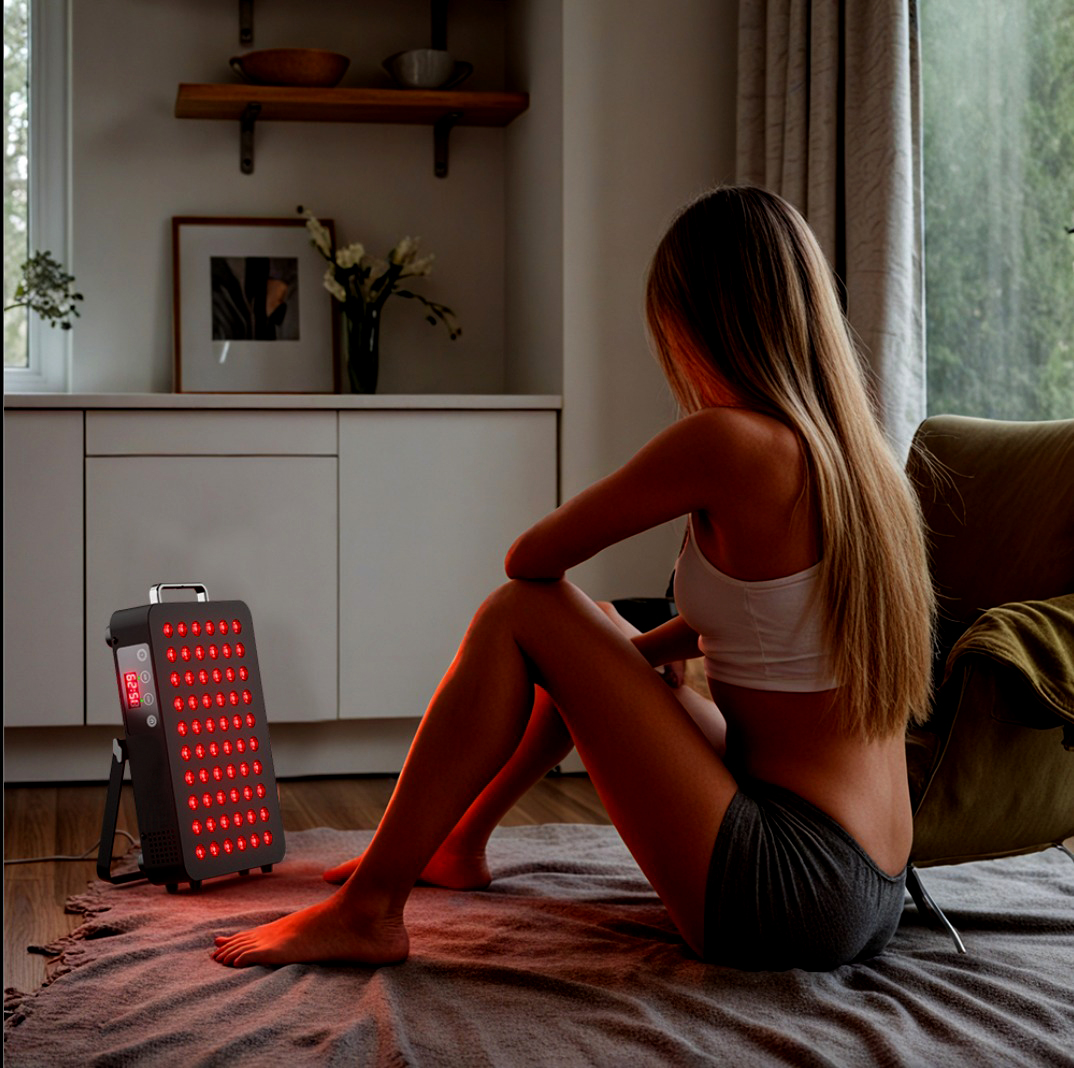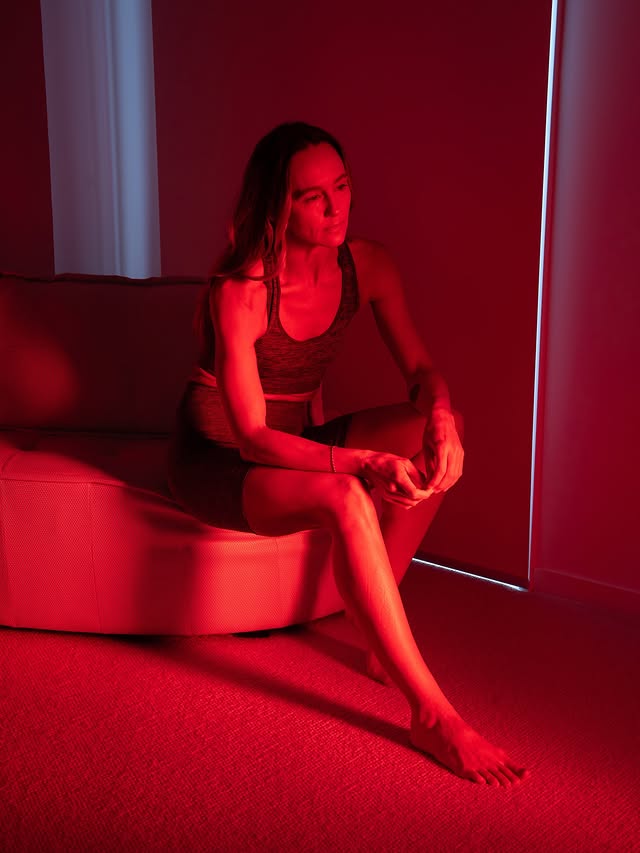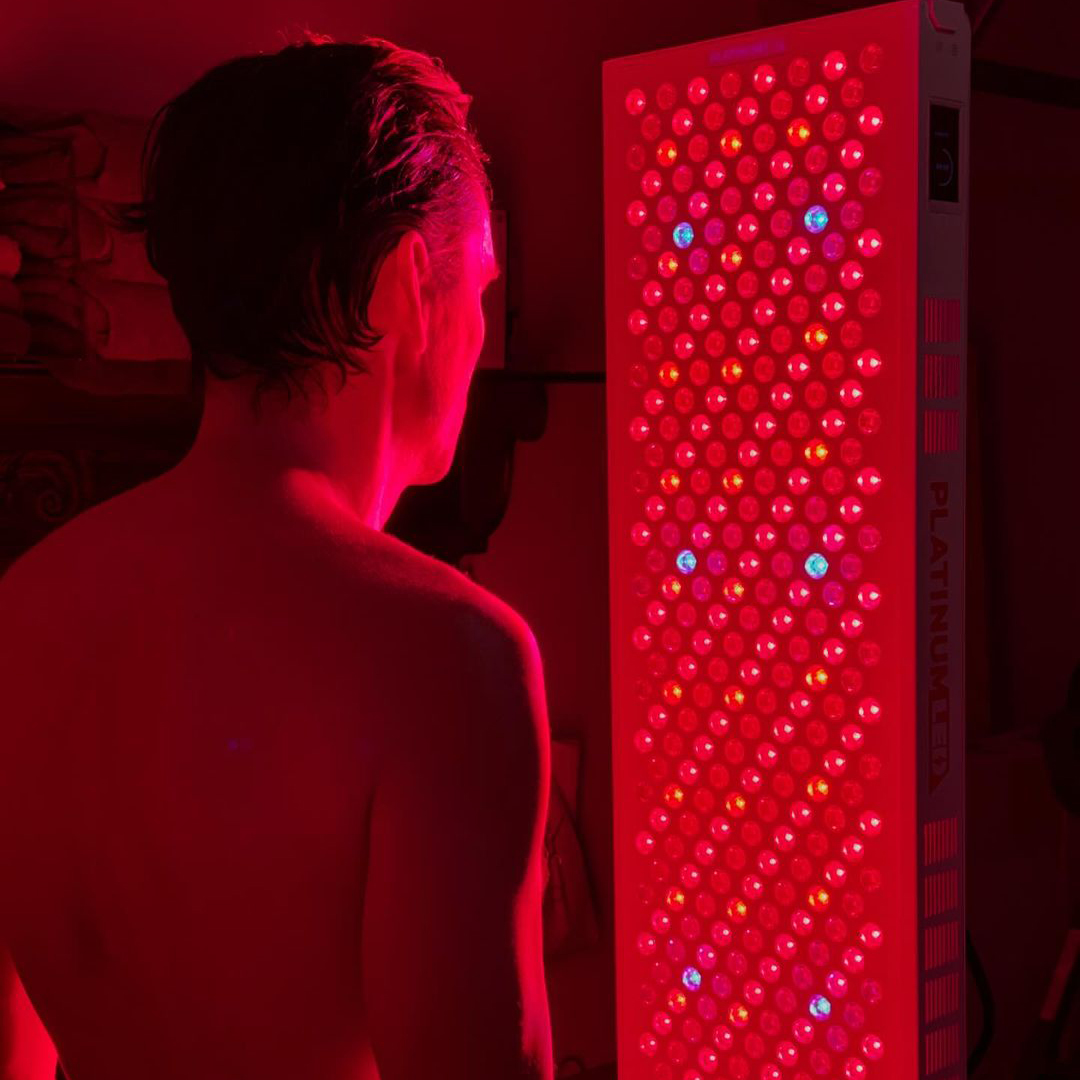![]() Free Shipping
Free Shipping ![]() Buy Now, Pay Later
Buy Now, Pay Later ![]() Eligible
Eligible
What Does Orange Light Therapy Do? A Deep Dive into the Amber Glow
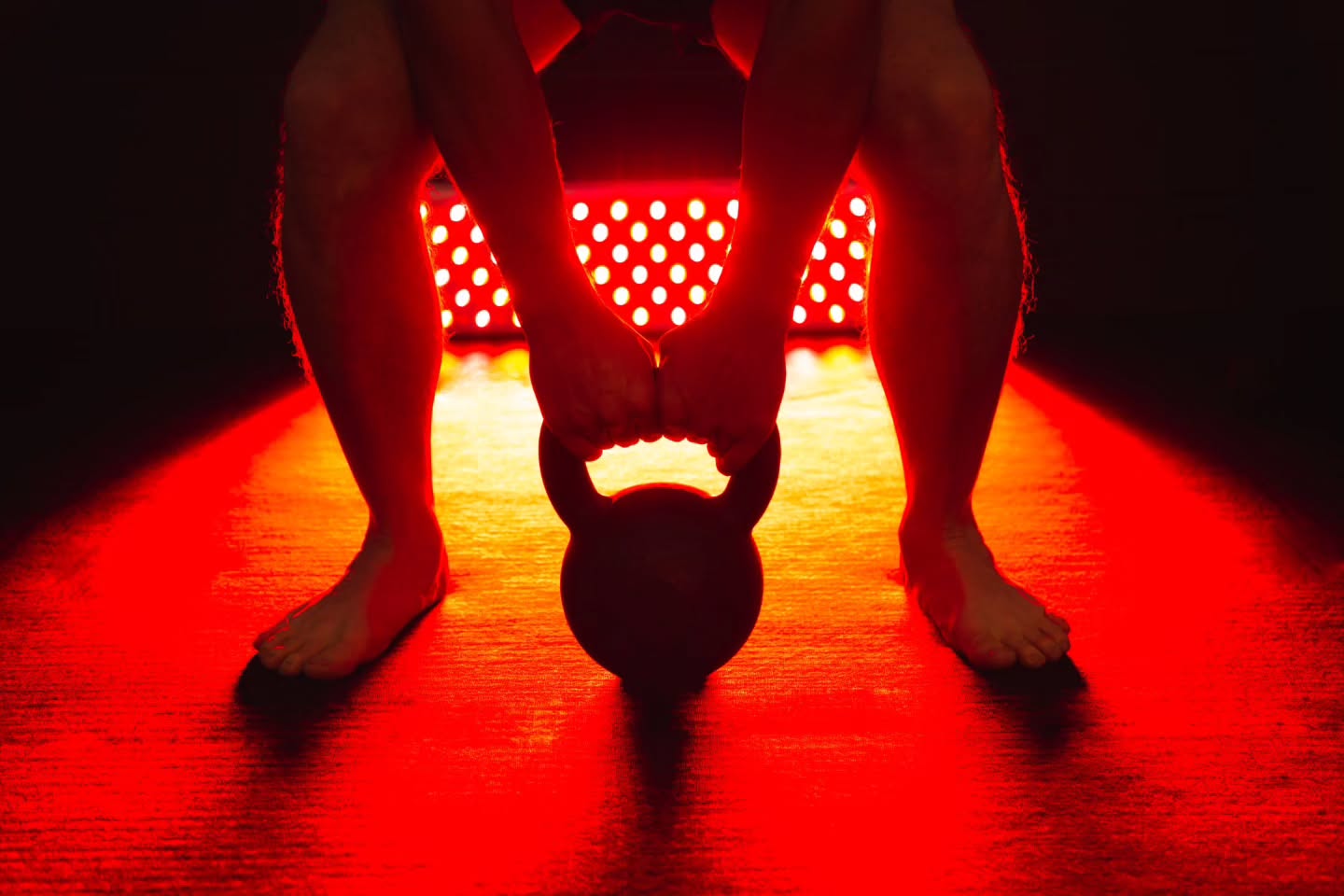
For years, red light therapy and its close cousin, near-infrared therapy, have dominated the wellness scene for their proven benefits in skin health and muscle recovery. But now, a new hue is entering the spotlight: orange light therapy.
You might be wondering, is orange light therapy the same as red light therapy? While they share similarities and are often used in tandem, orange light occupies its own unique place on the visible light spectrum, offering a distinct set of therapeutic advantages.
This article will unravel the science, benefits, and uses of orange light therapy, helping you understand if this warm, amber glow is the right addition to your wellness routine.
Understanding the Light Spectrum: Where Orange Light Fits In
Light therapy, also known as photobiomodulation (PBM), works by exposing the skin and cells to specific wavelengths of light. These wavelengths are measured in nanometers (nm). Different wavelengths penetrate the skin at different depths and interact with cells in unique ways.
- Red Light: Typically in the 620-700nm range. It’s excellent for skin surface issues, collagen production, and reducing inflammation.
- Near-Infrared Light (NIR): Ranges from 700nm to over 1000nm. It penetrates deeper, targeting muscles, joints, and even bone.
- Orange Light: Sits between 590nm and 620nm on the visible spectrum. It offers a blend of surface-level and slightly deeper penetrating effects, making it particularly powerful for certain skin conditions and mood regulation.
The Key Benefits of Orange Light Therapy
So, what does this specific amber wavelength do for your body? The primary benefits of orange light therapy are centered on skin rejuvenation and emotional well-being.
Enhances Skin Health and Complexion
Orange light is a powerhouse for the skin. Its wavelength is readily absorbed by skin cells, leading to several key benefits:
- Boosts Collagen and Elastin: It stimulates fibroblasts, the cells responsible for producing collagen and elastin. This leads to firmer, more youthful-looking skin and a reduction in the appearance of fine lines and wrinkles.
- Improves Skin Tone and Texture: It can help to even out pigmentation, reduce the appearance of sun spots, and smooth overall skin texture.
- Increases Blood Circulation: The light energy helps dilate blood vessels, promoting better circulation. This delivers more oxygen and nutrients to skin cells, facilitating repair and giving the skin a healthy, radiant glow.
A skincare expert we spoke to noted, “While red light is fantastic for anti-inflammatory action, many of my clients see a more immediate ‘brightening’ effect with orange light. It’s become a valuable tool for addressing dullness and hyperpigmentation.”
Accelerates Wound Healing and Scar Reduction
By promoting cellular regeneration and improving blood flow to the affected area, orange light can significantly speed up the healing process for minor wounds, cuts, and acne lesions. This accelerated healing, coupled with increased collagen production, also helps to minimize the formation of scar tissue.
Lifts Mood and Fights Seasonal Affectedness (SAD)
Light has a profound impact on our brain chemistry. Orange light, with its warm and invigorating quality, is known to stimulate the nervous system in a way that can boost mood and energy levels.
- SAD Treatment: It is increasingly used as a complementary treatment for Seasonal Affective Disorder (SAD). The warm wavelength can help mimic the uplifting feeling of sunlight, which is often lacking during the darker winter months.
- Mental Alertness: Some users report increased focus and a sense of calm alertness after sessions with orange light.
Orange Light vs. Red Light Therapy: A Side-by-Side Comparison
Are they the same? The answer is: they are similar but not identical. Here’s a quick breakdown to clarify the differences.
| Feature | Orange Light Therapy | Red Light Therapy |
|---|---|---|
| Wavelength | 590 – 620 nm | 620 – 700 nm |
| Penetration Depth | Medium (skin layers) | Medium to Shallow (skin layers) |
| Primary Benefits | Skin brightening, tone evening, mood enhancement, scar healing. | Collagen production, anti-inflammation, wrinkle reduction, wound healing. |
| Best For | Improving radiance, hyperpigmentation, and providing a mood lift. | Anti-aging, reducing redness & inflammation, and muscle recovery. |
| Feeling/Effect | Warm, uplifting, energizing. | Soothing, calming, healing. |
The Takeaway: Think of red light as a deep tissue healer for skin and inflammation, while orange light is a brilliant tone-enhancer and mood elevator. They are highly complementary.
How to Use Orange Light Therapy Safely and Effectively
Incorporating orange light therapy into your life is straightforward. The key is consistency.
- Professional Devices: You can find orange light as a setting on many professional-grade panels at dermatology clinics, wellness centers, and medspas.
- At-Home Devices: The market for high-quality, FDA-cleared home devices is growing rapidly. Look for masks, wands, or panels that specifically include an orange light (590-620nm) setting.
- Session Guidelines: A typical session lasts between 10-20 minutes. It’s generally recommended to use the device 3-5 times per week for optimal results. Always follow the manufacturer’s instructions for your specific device.
- Safety First: Orange light therapy is non-invasive and considered very safe for most people. However, always:
- Protect your eyes: Use protective goggles if they are provided.
- Consult a doctor: If you are pregnant, have a photosensitive condition, or are taking medications that increase light sensitivity, talk to your healthcare provider before starting.
Orange light therapy is far more than just a different color of red light. It occupies a unique therapeutic niche, offering a potent combination of skin-rejuvenating and mood-enhancing benefits.
If your primary goals are to achieve a brighter, more even complexion, reduce the appearance of scars, and lift your spirits, then orange light therapy is a compelling modality to explore. While it shares the scientific foundation of red light therapy, its specific wavelength allows it to address concerns that its red and near-infrared counterparts do not, making it a valuable and versatile tool in the world of light-based wellness.



